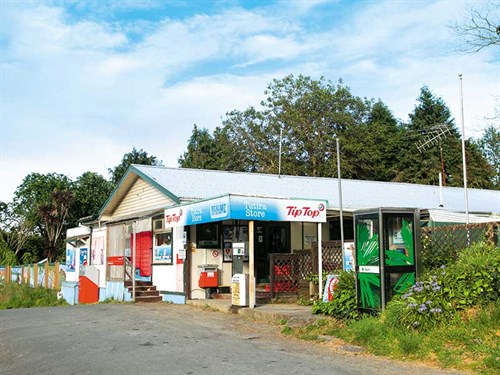In October, the weather was still picky, and we didn’t like what we saw. Swollen clouds skirted Lake Tutira, and capricious winds were skipping over the water. Instead of being a lovely calm blue, which the lake usually is, it looked muddy and moody.
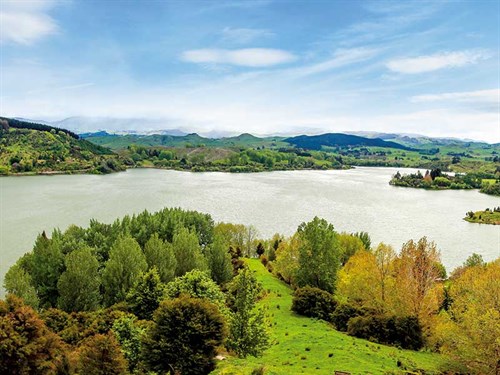
We were on the hilltop where we had hiked to get an elevated view of our camping spot for the night. Sitting on one of the many wooden seats dotted around the park, we could see for miles north towards the Ureweras and across to the Napier-Taupo Road in the west.
The campsite
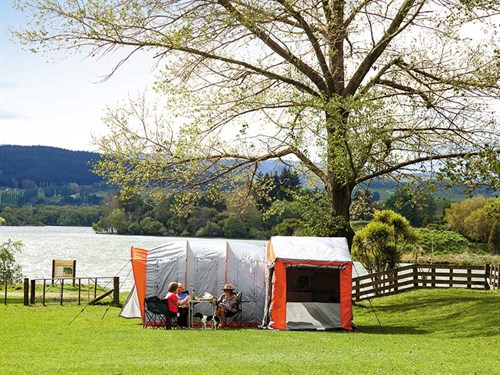
The campsite is part of the 463-hectare Tutira Country Park that was purchased by Hawke’s Bay Regional Council in 1998 from the Guthrie-Smith Trust and is jointly managed by the Department of Conservation.
There are basic facilities such as picnic tables, compost toilets, and cold-water taps but no kitchens or showers. The camp fee is a koha/donation of $5 per person to be placed in a donation box at the camp entrance. There can’t be many campsites where you pitch your tent and see a mother duck and her ducklings waddling past or turkeys or sheep. But that’s part of the charm of camping here.
Most visitors choose the reserve earmarked for campers, but if you prefer to pitch your tent or park your motorhome in a private spot, there are many tucked-away places around the lake.
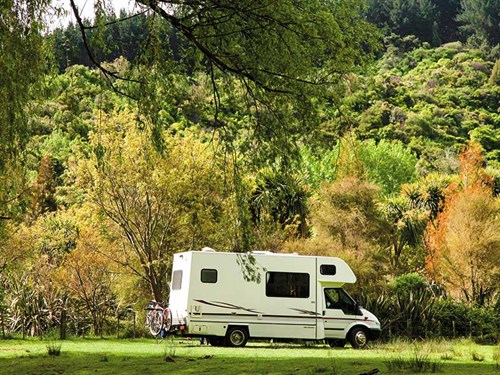
We struggled to pitch our tent in the wind. I’m not a dab hand at this, but fortunately, Glenn and Alex were both patient and capable, and soon the tent looked like something we could call home.
The previous weekend, we had hauled out our camping equipment to make sure everything was in working order. Air beds were top of the list, as the last time we went on a trip, not only did we blow the beds up by the huff and puff method but the double bed was also a nightmare, and, with two different weights on it, became like an inflated seesaw.
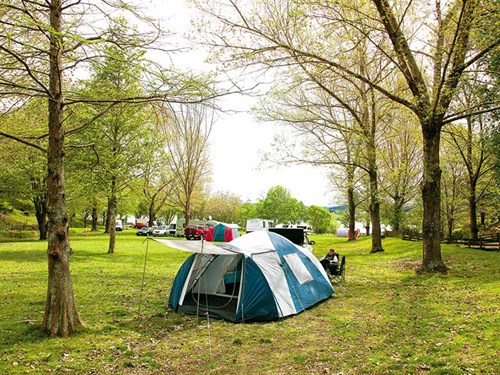
In the interests of getting a good night’s sleep, this time we decided to have separate beds.
Learning from the past, we had brought two pumps—a foot pump and a pump run off the car, kindly loaned by a camping friend.
Walking and tramping
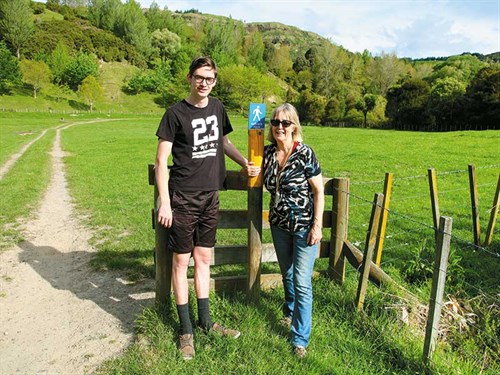
After a cuppa, we wandered off to explore the former site of Oporae Pa. We found it after a pleasant walk through cabbage trees and flax bushes. Here, there are tranquil views across the lake towards the Guthrie-Smith Arboretum. The lake and its surrounds provided an abundant food source for Maori who lived here in huts thatched with reeds until the 1820s.
There are four hiking trails through the park suitable for varying levels of fitness and plenty of signage and markers to keep you on the right track. The most extended walk is the Table Mountain track, passing through Tutira Station and the recreation reserve. The trail is seven kilometres long and when you make it to Table Mountain Trig, your reward is a spectacular 360-degree vista.
The pace of the campground slowed and quietened as night fell except for our sheep friends and their bleating dialogue. I wasn’t bothered by it, though. I reckon this and the gentle swooshing of leaves on the trees above is quite soothing.
But when rising damp chills my back in the middle of the night, I wish I were in a soft, warm bed in one of the fully equipped motorhomes parked nearby. Suddenly, camping doesn’t seem such a good idea.
The conservation aspect
As light tickled the landscape and an avian chorus erupted, I went out to see what was happening. Over the lake’s shiny surface, a little duck threaded a trail. A pink blush warmed the sky, and I felt like the smug early bird. There’s a lovely feeling of being alone with no one in sight.
We noticed much more plantings of manuka on the hillsides since we were last here. This project is an initiative between the council and Comvita NZ, and it can only add to conservation efforts taking place here.
Unfortunately, due to algal blooms, the lake is not suitable for swimming, fishing, or boating. I’ll come right out and say it: isn’t this a travesty in this supposedly clean, green country of ours? Let’s hope efforts to return it to a more pristine condition will work.
On the plus side, there’s lots to see in the surrounding area, which makes it an excellent stopover place for travellers.
Lake Tutira fast facts
- Lake Tutira Country Park is alongside SH2, 41km from Napier and 77km
- from Wairoa
- The twin lakes, Tutira and Waikopiro, separated only by a narrow causeway, cover 190 hectares
- Hawke’s Bay Regional Council, who manage Tutira Country Park, work closely with DOC, the Royal Forest and Bird Protection Society, local schools, HB Farm Forestry, and the Honda Tree Fund to undertake conservation efforts such as tree planting and pest control.
- For park updates and further information, visit hbrc.govt.nz.
